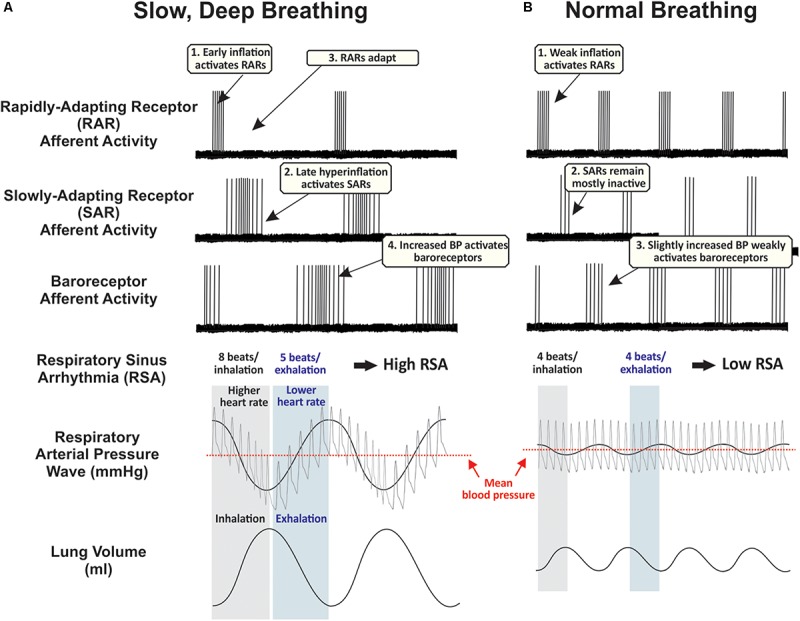FIGURE 1.

Proposed time course of peripheral afferent effects during (A) slow, deep breaths, and (B) normal breaths. These hypothetical traces are partly based on records from supportive experiments in anesthetized rats (Ho et al., 2001; Schelegle, 2003). During normal breathing, rapidly-adapting receptors (RARs) are phasically active during inspiration, slowly-adapting receptors (SARs) remain mostly inactive, and baroreceptors are weakly activated during exhalation. During repetitive deep breathing, RARs are activated during the early component of inhalation and then lungs hyperinflate at sufficient pressures to activate low- and high-threshold SARs, increasing traffic through the vagus nerve. Deep exhalations amplify respiratory arterial pressure waves to strongly activate peripheral baroreceptors. Human carotid baroreceptors are slowly-adapting (Eckberg, 1977). Along with these cardiorespiratory vagal afferents, additional airway afferents probably play a significant role in mediating the sensory element of slow, deep breathing, while sensory and motor systems are highly integrated to control the rate of airflow from the lungs and implement cognitive control of respiratory motor drive (see Introduction). BP, blood pressure.
